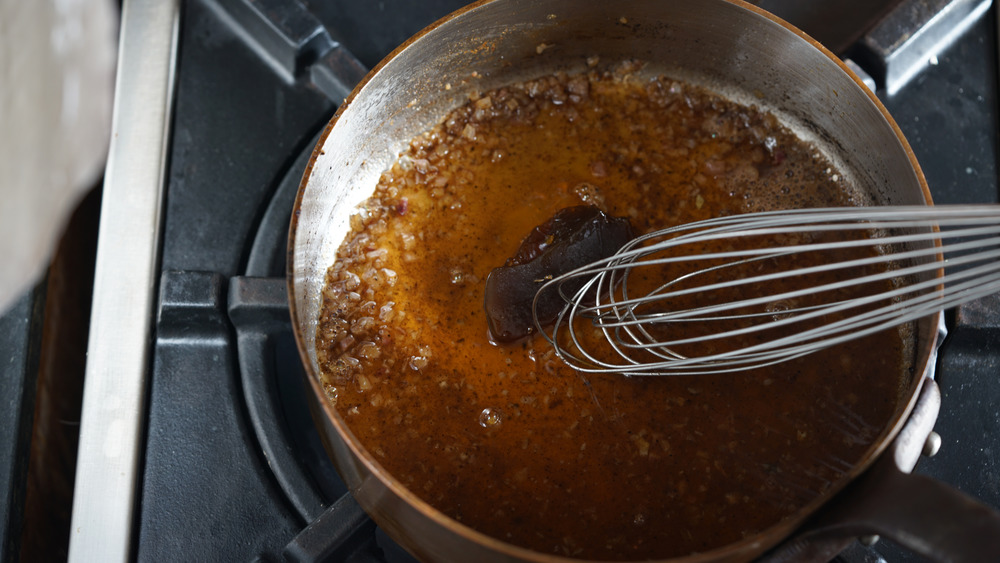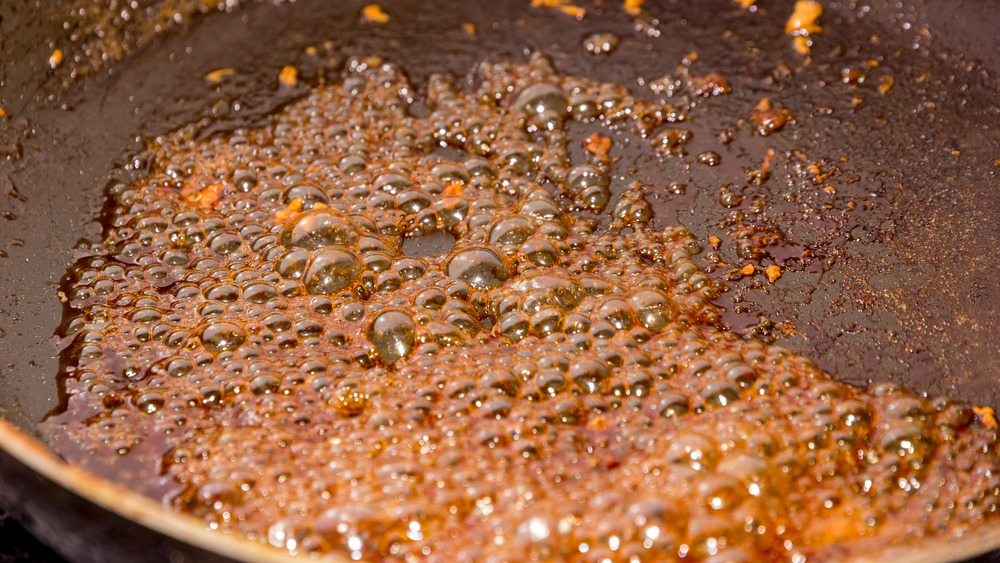Why You Should Always Deglaze Your Pan
You've just finished searing a steak on the stove or roasting a chicken in the oven. After removing your meat from the pan or skillet, you're left with a bunch of burnt bits and debris at the bottom of the pan. Naturally, your first instinct is to pour said leftovers down the kitchen sink and let your pan soak with some hot soapy water before you attempt to scrub it clean, right?
Step away from the dish soap, though (for now at least!). Before you wash your cookware, consider deglazing your pan instead and putting whatever's remaining on the bottom to good use. Deglazing is an easy process that involves simmering liquid in a pan that was used to roast or cook meat to soak up any burnt-on pieces and residue, The Spruce Eats explains. Why should you deglaze a pan, though? Here's what you need to know and why you should add it to your cooking routine.
Deglazing will make your dish a lot more flavorful
Deglazing may seem strange (you may have never even heard of it!) but plenty of chefs and home cooks swear by it. Kitchn explains that deglazing is a great way to soak up extra flavor that's left behind on your pan after you remove the meat from it. All of those burnt pieces and cooking liquid is a "treasure trove" of deliciousness that you can use to make an easy pan sauce for your main dish or as a base for soups and stews. In an interview with Eat This, Not That!, Dan Harris, executive corporate chef at Chicago's 4 Star Restaurant Group, added that deglazing can add more depth and dimension to a dish.
Just note that to get the most flavor out of your deglazing, you shouldn't use plain water. The Spruce Eats recommends stock, juice, leftover liquid that you cooked other food in, or even wine and beer.

